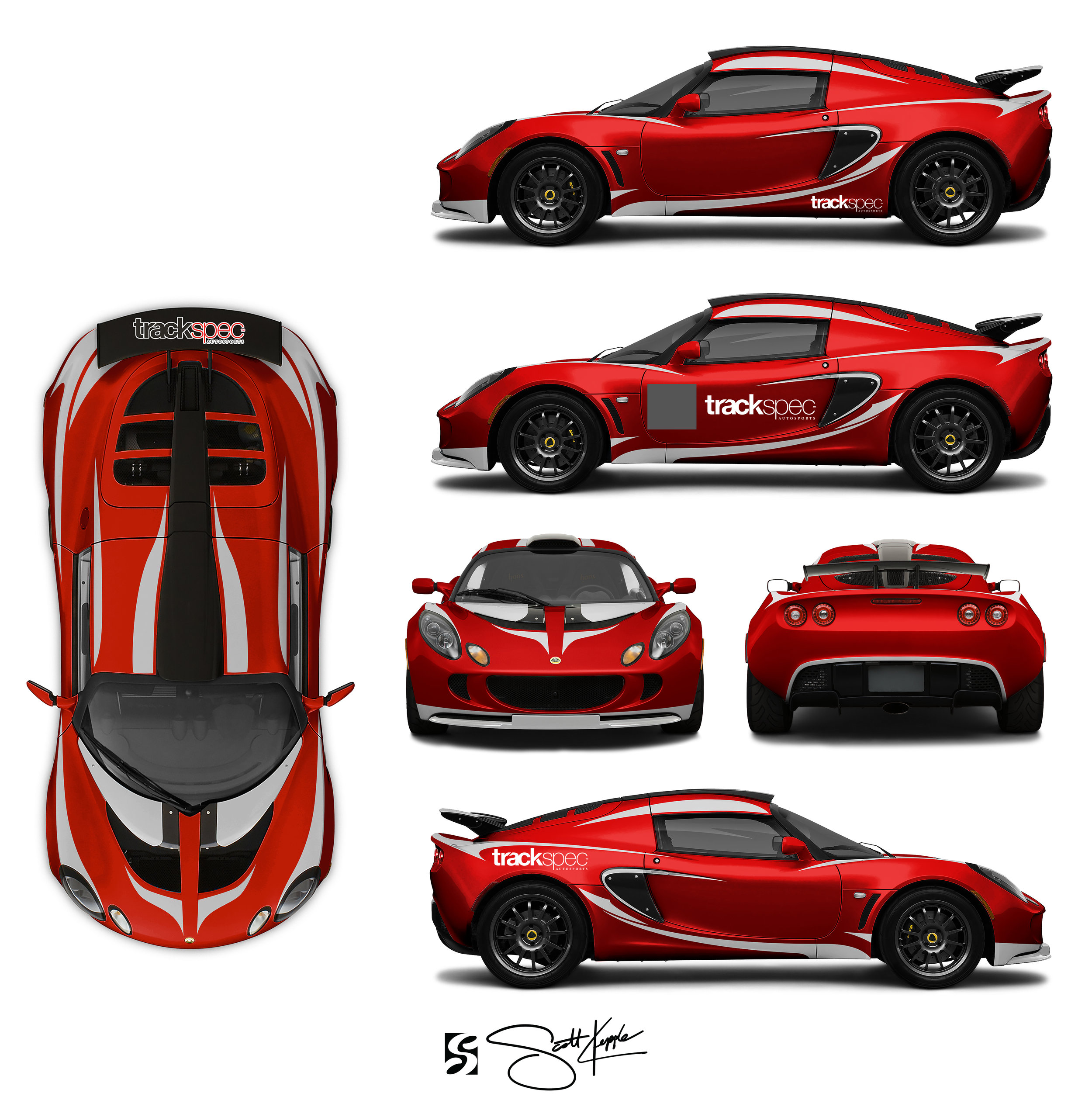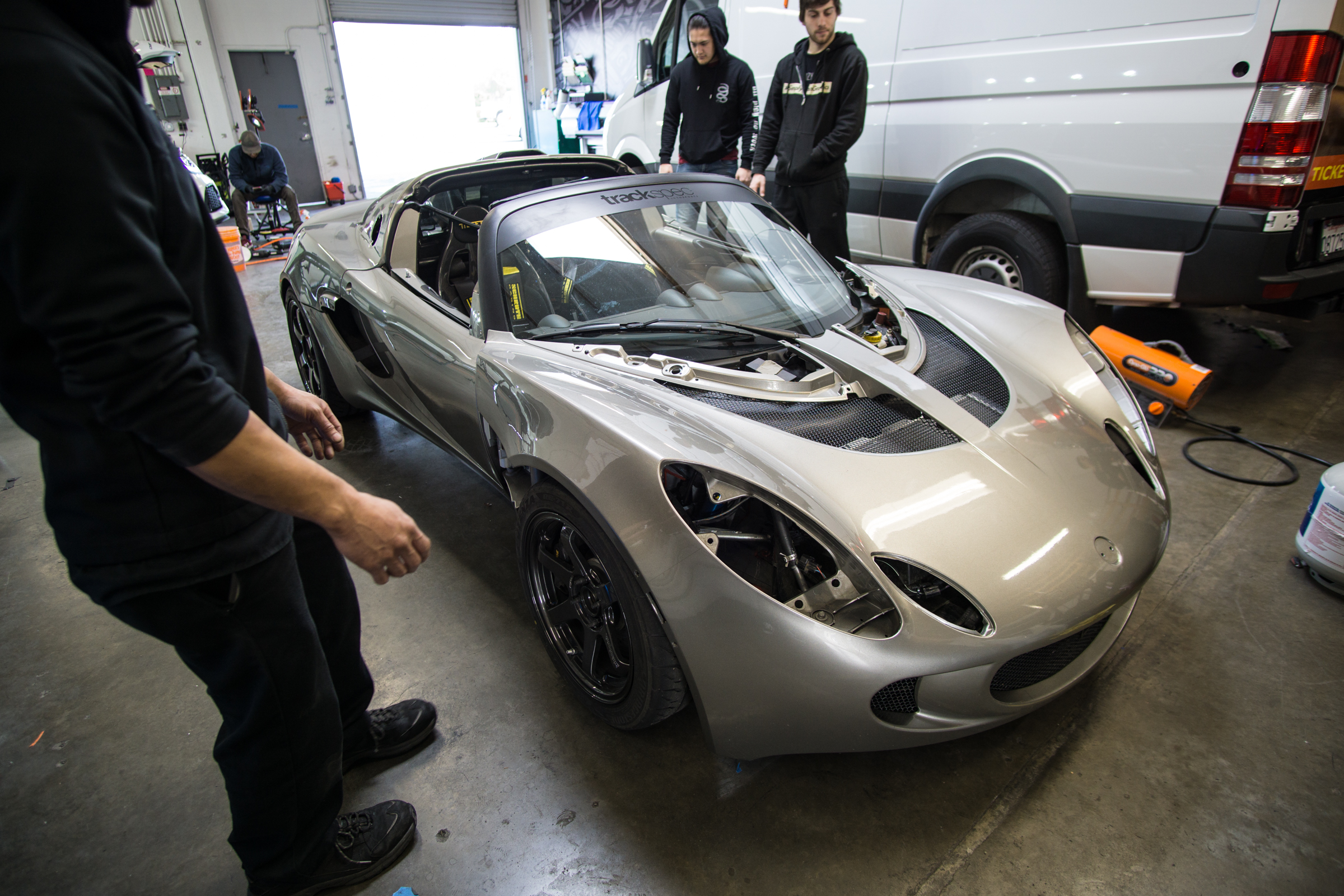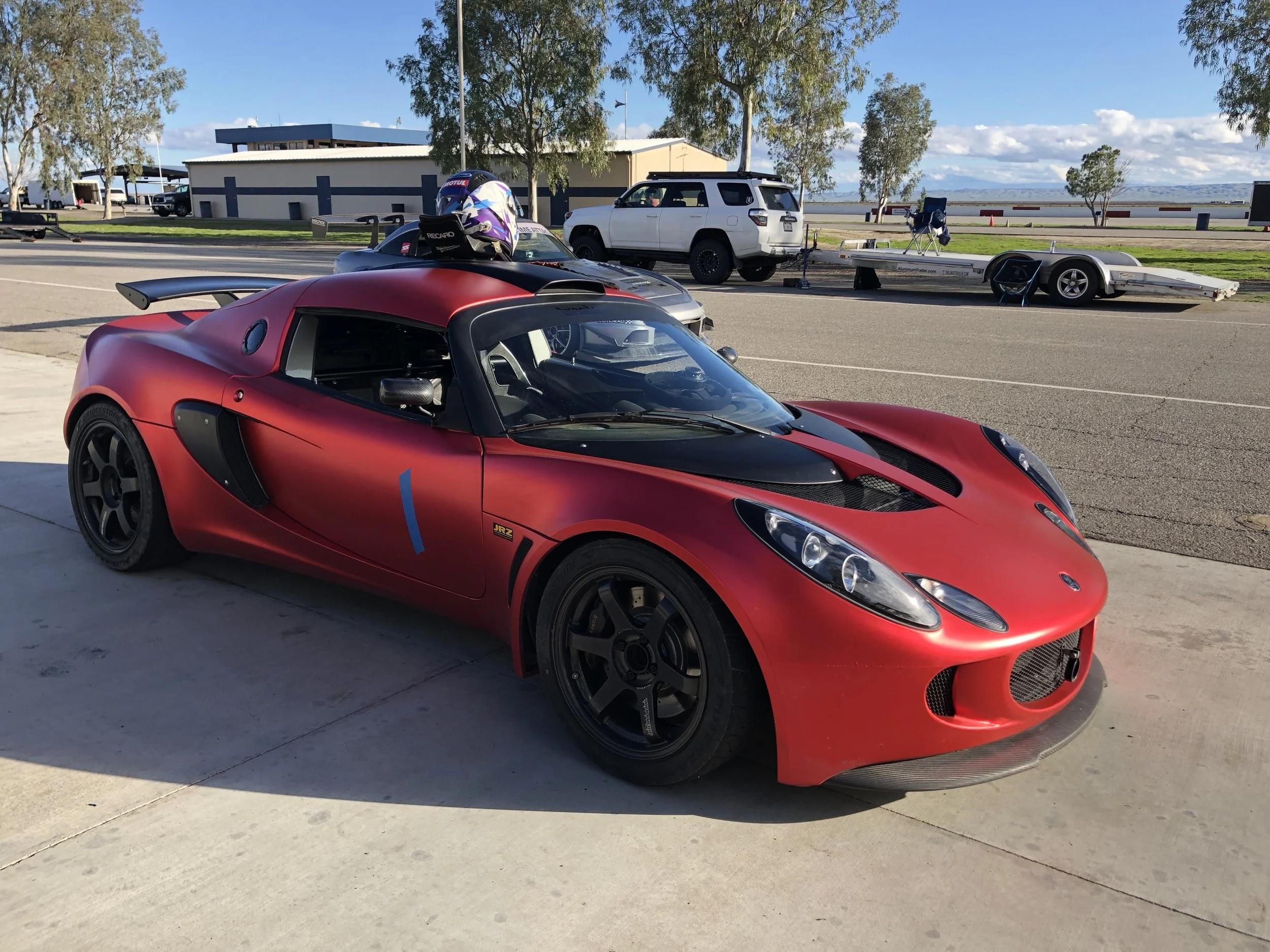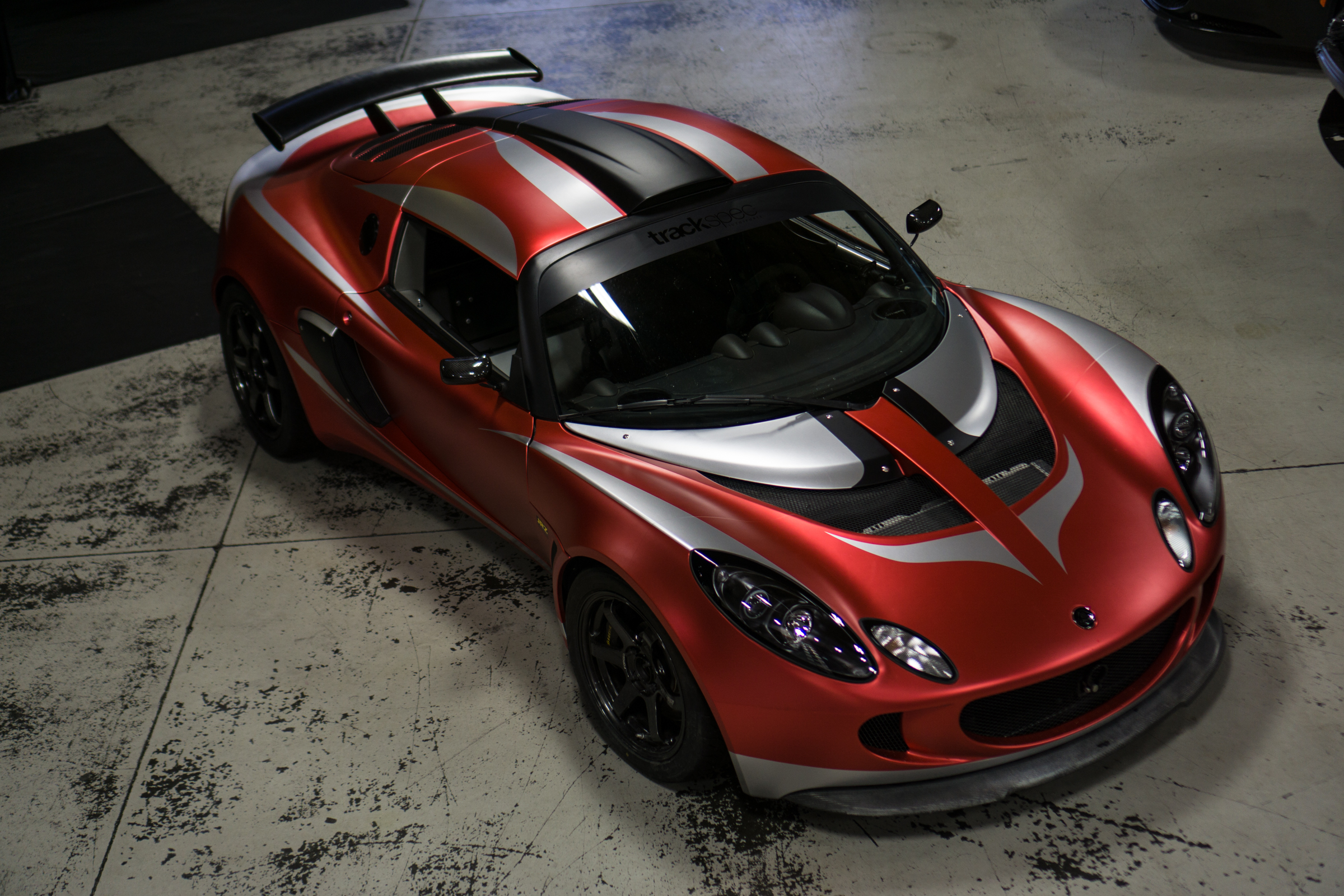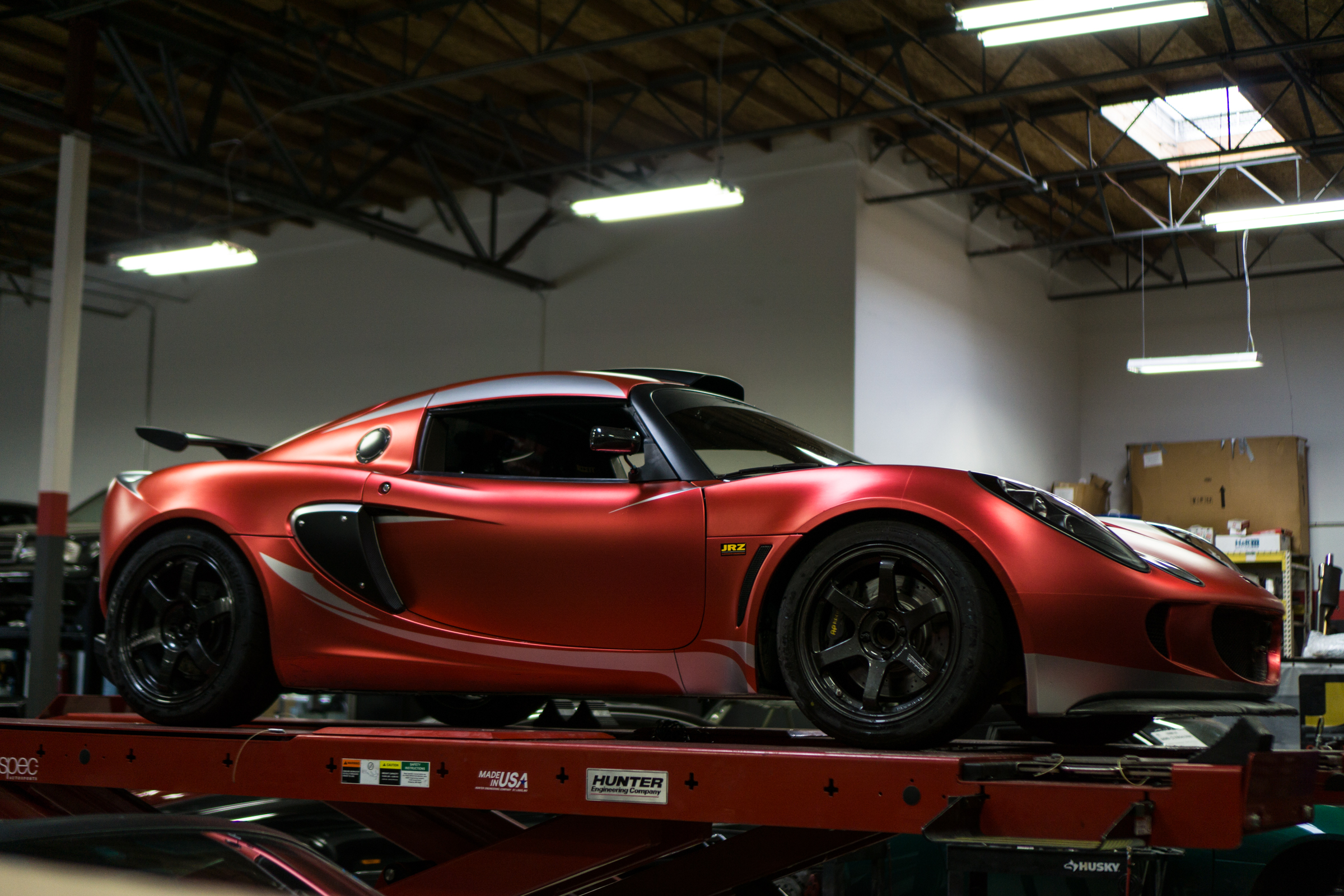If you’re looking for:
Part 1: The Rebuild, go here.
Part 2: The Wrap, go here.
Part 3: More Goodies, go here.
Part 4: Aero, go here.
Part 5: Cooling, go here.
Part 6: Fuel & Oil Control, go here.
Part 7: Clutch, Trans, Misc., go here.
Part 8: Roll Cage, go here.
Part 9: Brakes, go here.
Part 10: K24 Swap 1, go here.
Part 10: K24 Swap 2, go here.
Part 10: K24 Swap 3, go here.
Part 11: K24 Head Work, go here.
Part 12: K24 Swap Rewire, go here.
In this blog post:
Design by Skepple - 1/28/19
Buttonwillow Test Day - 2/9/19
Design by Skepple
Jan 28, 2019
When we first acquired the Exige, Victoria and I had multiple conversations about what we wanted to do with it. Our original plan was to keep it street-legal, and just use it for canyon driving and the occasional HPDE events. I knew that it would have a much higher resale value if it was kept street-legal. Plus, being that this is our first Lotus, we liked the idea of being able to take it out every now and then. We also wanted to take it on long road trips and enjoy some of the fun back roads we have here in California.
Well, that idea didn’t last too long. The more I drove it on the track, the more I realized that it belongs on the track. So, we’ve decided to turn it into a full race car build. The class it will race in in still undecided. I know this option will lower its book value, but I see value in building, developing, and driving this Exige as the shop’s race car.
So, first things first. The replacement rear clam was pretty rough looking (hard to tell in photos), so we had to decide whether to have it repainted, or do a vinyl wrap. The wrap made the most sense because it would be easier to repair or replace body panels from damage due to contact on the track in the future.
When we decided to give the car a new look, we didn’t really know what we were looking for. We’ve always worked with one designer, Ryan Barnachea, for all our marketing materials and he’s always just known what we like: clean, fresh, and something that will last over time. But we knew that livery was a different ball game. We’ve also always loved Tom Tang’s liveries that he’s had on his S2000, so we thought we’d contact the guys behind those designs: Skepple. Scott and Adam have been amazing to work with. They are known for some pretty awesome designs, but were also able to accommodate to our simplistic style. After many back and forth emails with them, this is the design we went with:
The car will be wrapped in a base red with accents of silver and black. When it came down to choosing colors, it was a really difficult decision. We didn’t want to invest too much on an expensive, high quality vinyl since it would be a track car, but we also wanted it to be a little different than your average red car. We ended up picking Teckwrap Strawberry, which is a matte chrome red, for the base.
This design makes it possible to make minor changes of the livery without having to redo the entire wrap. It’s a fairly simple design, but still easily recognizable out on track, which is what we were going for. We played with the placement of the logo and decided that is something we will figure out later.
Wrap install by SFG Wraps
Now that we had our design finalized, we took it to our good friends at SFG Wraps. To make it easier on them, we took apart the car and towed it over. They began to clean the car in preparation for the vinyl that was scheduled to be delivered the following day.
Partial Finish
Feb 8, 2019
There were some delays in receiving the wrap material, and with its first trackday of the year coming up on February 9, time was definitely ticking. The vinyl arrived two days before we had to put the car back together and tow it down to Buttonwillow Raceway. SFG and I decided it would be best to just get the base done, and then come back after the track to get the rest of the design applied. The team at SFG worked long hours to get the base on and we are extremely happy with the results!
This color is pretty interesting! Different angles and lighting will change the way it looks. Indoors, it looks more orange-red, and less chrome. Outdoors, it looks more pinkish red and more chrome. We found out that this color specifically is semi-translucent, which means the color of the paint of the car affects the look of the vinyl as well. Unfortunately, it is pretty hard to capture its true beauty via camera, so you’d have to just see it in person.
Weight Reduction
Because we had to take the car apart for SFG to do a thorough wrap, I decided to take out some weight while I was at it. I removed all the HVAC components, passenger seat, factory 3-point seat belts. rear panel, and carpeting. There is plenty more weight to be taken out, but a lot of it will go back in with the roll cage and fire suppression system. The minor weight reduction required a touch up of the corner balance and alignment.
Currently, the car weighs 1885 lbs without driver and a half tank of fuel.
Buttonwillow with OnGrid
Feb 9, 2019
As mentioned above, one of the reasons we didn’t finish adding all of the accent graphics to the livery is because we ran out of time. Priority was to test the car again at Buttonwillow Raceway now that the JRZ RS PRO3 dampers had been installed and we went back to an OEM steering rack. I had driven the car at Thunderhill last month and noticed a big improvement, but it was important for me to have Tom jump back into the car and give his assessment too.
PC: Cali Photography
Unfortunately, as beautiful as these photos are -- they don’t truly capture what happened that day. We had been hoping for good weather but by 7am it was pouring rain. Our first session on track had us lapping in the low 2:30s. There were many puddles on track at: cotton corners, exit to the bus stop, riverside to the kink, phil hill, into the sweeper, and entering sunrise as well as exiting sunset. So it was pretty hairy for the first two-thirds of the day.
Despite these less than ideal conditions, Tom immediately noticed that the car was so much better to drive. It now requires significantly less effort and the JRZs do such a better job of soaking up bumps (of which there are many at Buttonwillow) and related bump-steer. If you watch the in-car video comparison between a lap on this date, and back in December it is very obvious that the car is much more composed and settled. Remember, good race cars should be EASY to drive and confidence inspiring! The Lotus has definitely taken significant steps in this direction now, thanks to the RS PRO3 dampers. The OEM rack is also better suited for road-course use, as it’s more progressive and less heavy.
PC: Cali Photography
Throughout the day, conditions were constantly changing. Some of the puddles dried up, but then it rained some more so the track always varied between dry and damp sections making it difficult to run a fast lap time. This was also the hardest the car has ever been driven (between the 2 of us we did 10 sessions back to back in total). This meant that IATs (intake air temps) were about 30 degrees hotter than when Tom went sub-2 back in December. The stock ECU pulls timing with increasing IATs and these cars are known to heat soak on the race track. With the intercooler sitting on top of the hot engine and a tiny roof scoop, there isn’t enough air flow to keep the temps down.
Despite all of this, by the end of the day, I had run a 2:02.54 and Tom had run a 2:00.17 which was less than a second slower than his (and this car’s) previous PB for the CW13 configuration. Tom is confident that had weather conditions been better, with cooler IATs, this car can easily do 1:58.x or even 1:57.x lap times as is. This just means that we’ll have to go back and try again soon!
Lotus Exige S240 Driver: Jon Vo 2:02.54 Buttonwillow Raceway 2/9/19 OnGrid Event
Data Analysis
Below is the GPS AiM data (MPH speed trace) comparing Tom’s 1:59 lap back in December (blue line), and his 2:00 this time around (red line). February was slower through Bus Stop, Riverside, and Phil Hill, (likely wet conditions related), but faster through Off Ramp, Cotton Corners, and Sweeper. The graph also shows better acceleration back in December (related to the IAT issue we mentioned earlier).
AiM's Race Studio software has the ability to break the track up into sectors, and can calculate what the “theoretical best lap” would be by stringing all of the best sector times together. Back in December, when Tom ran a 1:59, his theoretical best was a 1:58.8. This time, Tom’s theoretical best was a 1:57.9. Pretty incredible, considering the weather and hotter intake air temps. For us, this data helps to confirm what we both felt: the car is definitely faster now with the JRZs.
PC: Cali Photography
PC: Cali Photography
PC: Cali Photography
Finished Wrap
After Buttonwillow, we took the car straight back to SFG Wraps to complete the design with the Teckwrap Silver Satin Chrome accents. We are in love with how this turned out!
If you’re looking for:
Part 1: The Rebuild, go here.
Part 2: The Wrap, go here.
Part 3: More Goodies, go here.
Part 4: Aero, go here.
Part 5: Cooling, go here.
Part 6: Fuel & Oil Control, go here.
Part 7: Clutch, Trans, Misc., go here.
Part 8: Roll Cage, go here.
Part 9: Brakes, go here.
Part 10: K24 Swap 1, go here.
Part 10: K24 Swap 2, go here.
Part 10: K24 Swap 3, go here.


